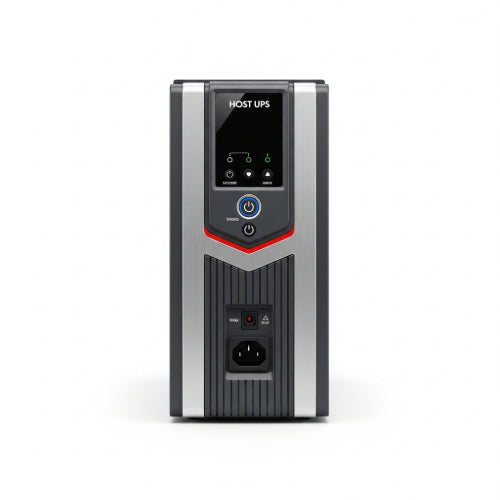How to Maximize the Life of Your UPS System
In regions like General Trias, Calabarzon, where power outages and voltage fluctuations can be a regular occurrence, an Uninterruptible Power Supply (UPS) system is more than just a convenience – it's an essential safeguard for your valuable electronics. It protects your computers, servers, network equipment, and other critical devices from sudden shutdowns, data loss, and hardware damage.
However, a UPS isn't a "set it and forget it" device. Like any battery-powered system, its performance and lifespan depend heavily on proper care and maintenance. Maximizing the life of your UPS not only protects your investment but also ensures that it's ready to perform when you need it most.
Here are the best tips to get the most out of your UPS system:
1. Don't Overload Your UPS
This is perhaps the most crucial rule. Every UPS has a specific VA (Volt-Ampere) and Wattage rating.
- Understand Load Capacity: Never connect equipment that collectively exceeds your UPS's rated capacity. Overloading forces the UPS to work harder, generates more heat, and significantly shortens the lifespan of its internal batteries and components.
- Leave Headroom: Aim to keep your typical load at 60-80% of the UPS's capacity. This provides a buffer for power surges and prevents strain on the system.
- Prioritize Critical Devices: Only plug in essential equipment that absolutely needs protection from power loss. Non-critical devices (like printers that don't need to finish a print job during an outage, or external monitors if your laptop has its own battery) can be plugged directly into wall outlets or a separate surge protector.
2. Maintain Optimal Operating Temperature
Heat is the enemy of batteries.
- Cool and Dry Environment: Place your UPS in a cool, dry, and well-ventilated area. Avoid direct sunlight, cramped spaces, or near heat sources like radiators or heating vents.
- Adequate Airflow: Ensure there's sufficient space around the UPS for proper air circulation. Don't block its ventilation vents.
- Recommended Temperature: Most UPS batteries perform best between to ( to ). Temperatures consistently above this range will drastically reduce battery life.
3. Perform Regular Battery Self-Tests & Calibration
Modern UPS systems often have built-in diagnostic tools.
- Schedule Self-Tests: Most UPS units have a "self-test" function (often through a button on the unit or via accompanying software). Perform these tests monthly or quarterly as recommended by the manufacturer. This checks the battery's health without fully draining it.
- Periodic Calibration/Discharge: Every 3-6 months, perform a controlled discharge test (a full discharge and recharge cycle). This recalibrates the battery runtime gauge and helps maintain battery health. Do this during off-hours or when you can safely shut down connected equipment.
- Monitor Software: If your UPS comes with monitoring software, install and use it. It provides real-time status, battery health, load levels, and can alert you to potential issues.
4. Avoid Frequent Deep Discharges (Unnecessary Ones)
While periodic calibration is good, letting your UPS run out of battery power repeatedly during minor flickers is not.
- Graceful Shutdowns: When the power goes out, and the UPS kicks in, use the opportunity to save your work and safely shut down your connected equipment. Don't rely on the UPS to keep your system running for extended periods unless absolutely necessary.
- Optimal Cycle Life: Batteries have a finite number of charge/discharge cycles. Minimizing unnecessary deep discharges extends the overall lifespan.
5. Clean Connections and Vents
Dust can impede performance and cause overheating.
- Dust Removal: Periodically (e.g., every 6 months), use compressed air to gently blow dust out of the UPS's ventilation vents.
- Check Cables: Ensure all power cables are securely plugged into the UPS and the wall outlet. Loose connections can lead to intermittent power.
6. Replace Batteries Proactively
UPS batteries are consumables with a finite life, typically 3-5 years under normal conditions.
- Don't Wait for Failure: If your UPS monitoring software indicates a failing battery, or if the UPS fails a self-test, replace the batteries. Don't wait until a power outage occurs and your system crashes.
- Genuine Replacements: Use genuine replacement batteries or high-quality, manufacturer-recommended alternatives.
- Professional Help: If you're unsure about replacing the batteries yourself, consult a qualified technician.
By following these best practices, you can significantly extend the operational life of your UPS system. This proactive approach ensures your critical electronics remain protected from power disruptions, giving you peace of mind and saving you from costly repairs or data loss – a truly valuable asset for any home or office in General Trias, Calabarzon.







